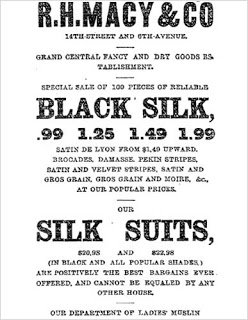The Real Psychological Reason Why Retail Prices Always End With .99

With the recent release of Microsoft's famous console Xbox One X, it is safe to assume that gamers' and technology enthusiasts' reactions will mostly be on the optimistic end of the scale. Currently priced at $499.99, the console surely brings a lot to the gaming table. However, what most people miss or simply don't notice, is the form in which the price is laid out. By the form, we mean the two 'nines' (e.g., $19.99) at the end of the price.
This pricing formula can be found almost in every shopping center, be it physical or electronic. A fidget spinner for $4.99, a twirling spaghetti fork for £5.99, all these are examples that illustrate the omnipresence of this pricing phenomenon. Despite its widespread use, this pricing method (a.k.a psychological or charm pricing) goes unperceived by most people, as many of them see it merely as a skin-deep practice.
Contrary to what most people think, psychological pricing is far from being merely an aesthetic tactic used by marketeers. In fact, price ending is a deeply-rooted marketing strategy, which relies on the principle that the perceived attractiveness of certain prices vary depending on the form in which they are expressed. In other words, some prices are psychologically more appealing than others. This marketing strategy consists in presenting prices as "odd numbers" by subtracting 1 cent from a round price (e.g., using $1.99 instead of $2). The idea is that consumers tend to perceive odd prices and round ones as being associated with two different levels. For example, $2.99 is associated with spending 2 dollars rather than $3.
In a 2005 study entitled "Penny Wise and Pound Foolish: The Left-DigitEffect in Price Cognition", Thomas and Morwitz concluded that nine-ending prices are perceived to be smaller than round prices. However, this effect was only observed when the leftmost digits of the prices were different, hence the phenomenon name "The Left Digit Effect". This was further supported by another study published in 2009, which uncovered that consumers are more likely to choose an item with a nine-ending price, if the alternative product's price is presented in a round format.

The origins of this phenomenon are unclear, although some of its earliest uses date back to the late 19th century as you can see in the picture above, which shows an 1880s advertisement. However, most hypotheses regarding the underlying theory of this strategy seem to explain it as a psychological method that is based on the fact that consumers generally tend to see items with odd prices as being cheaper than normally priced alternatives. Moreover, odd prices are not limited to numbers that end with nines only, as a study from 1997 revealed that 60 percent of products' prices shown in ads ended with 9, and 30 percent ended with 5. With about 90 percent of prices expressed in an odd format, it is only natural to say that psychological pricing has become the norm rather than the exception, which could explain why very few people question this practice.
Important note: this article originally appeared on http://www.creativewi.re/ (I am the editor of this site, and I thought it would be cool to share it with you guys!).
Congratulations @bbarcesaj125! You have completed some achievement on Steemit and have been rewarded with new badge(s) :
Click on any badge to view your own Board of Honor on SteemitBoard.
For more information about SteemitBoard, click here
If you no longer want to receive notifications, reply to this comment with the word
STOP